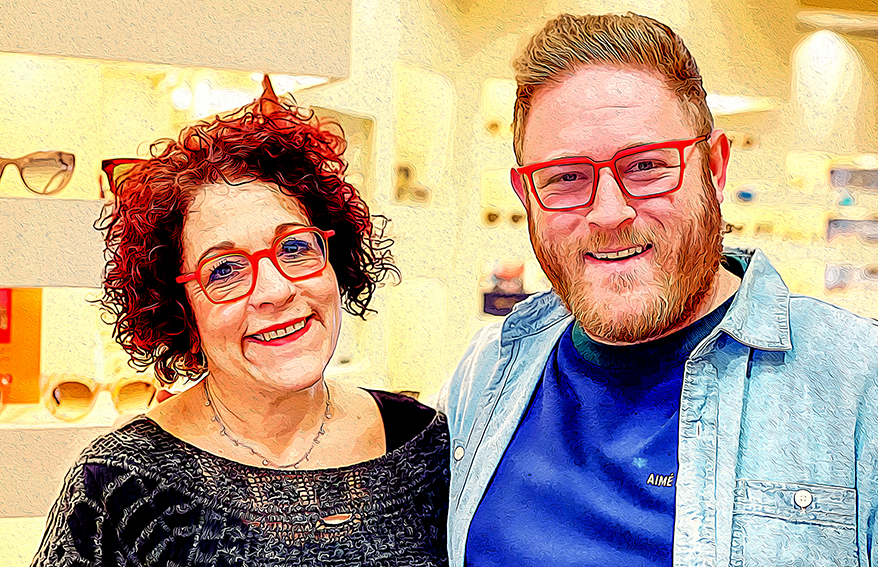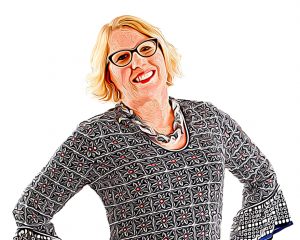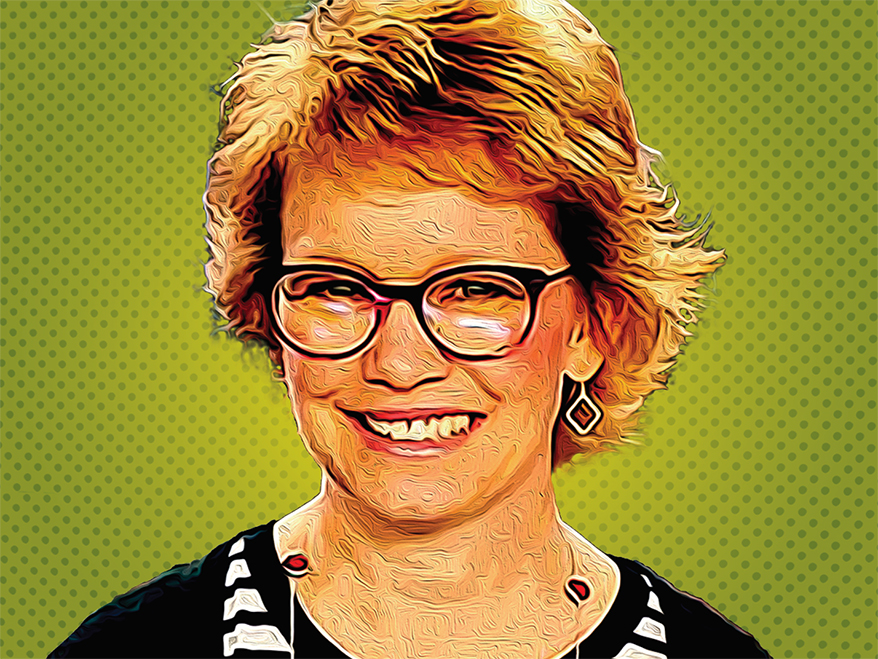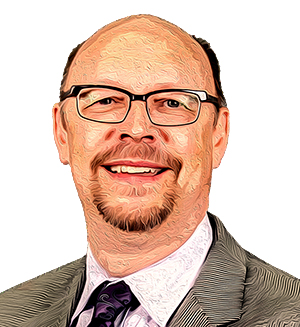IN HIS BOOK The Dip, author Seth Godin discusses the value of “strategic quitting” — in his view, one of the secrets of successful organizations — and contrasts this with “reactive quitting.” Many in the eyecare industry view what they do as a calling, but this very quality can get in the way of strategic quitting. When the stakes are personal, as much as financial, it can be easy to neglect the fact that, eventually, everyone has to make some decisions about how, when and under what conditions they intend to hang up the occluder.
“It’s usually a control issue,” says Dr. Steve Vargo, MBA, an optometric practice management consultant at IDOC. “Selling your practice is more than a financial transaction, it’s also ‘letting go’ of control and independence you’ve worked hard to attain.”
The only way to maintain effective control over your exit is to plan — and that’s the main message that industry experts and ECPs who have already embarked on the process had for INVISION — plan for your retirement or transition, and plan early. Remember that it’s a long process; if your goal is to sell to someone who will maintain your standard of care and service, it can take time to find the right person. Further, as with real estate, “staging” is important to the ultimate transaction…and takes time. And even if the business will be kept in the family, a shared understanding of what the business’s legacy is to be can prove elusive.
For starters, what are your post-ownership goals? Are you looking to sell or just step away from day-to-day management? Is this, at the end of the day, primarily a financial matter or is the business’s continued standing in the community the most important factor? Is this the end of your practicing career or will you still see patients? Are your sights set on a non-practicing industry role? Great! But have you developed the necessary skills?
Advertisement
According to Alan Cleinman, founder and president of Cleinman Performance Partners, when it comes to optometric practices, there are two types of buyers. The first is the OD who desires to work in the practice they’re acquiring. In this case, the practice has to be able to support both the seller and the buyer if the former wants to continue to practice, which is most often the case. The second is the firm that wants the seller to continue (regional multi-location practices or PE-backed consolidators). “In each case, a firm understanding of the goals of the seller is critical,” says Cleinman. “As for involvement beyond being a practicing OD or optician, there exist many options for those with exceptional managerial or technical abilities. However, just because you’ve been in practice for 30-plus years doesn’t make you a candidate for an industry position.”
Disposing of an eyecare business presents different challenges from exiting other industries for many reasons, not the least of which is the duty of care that eye doctors and other ECPs feel to their clientele. According to Dr. Maria Sampalis, founder of the Corporate OD Alliance, “Really it is all about the patients; they trusted you for a long time and you want your legacy to continue to be a good one. We have a responsibility to our communities.” Then there’s the sheer complexity of optometric businesses and the accounting and valuation methods that are common in the industry. First, says Cleinman, most ODs use cash accounting versus accrual, which means their books do not tell the full story of the business; costs are not aligned with sales. “Further, the profession has complex accounts receivable because of vision plans. There’s a very fluid inventory aspect including work-in-process. Our profession involves credentialing, liabilities, contracts and other aspects not … found in the sale of a sub shop, retailer or other service business,” he says.

The industry offers a wide array of options for disposal or phasing out—closing down, selling to an associate OD or partner, passing it on to family, putting it on the market, selling to private equity, retiring while maintaining ownership, selling charts to a local OD, finding a sublease owner in a corporate setting, exit by merger with a larger operation. But, Cleinman warns, “Many smaller practices have challenges transitioning because they aren’t true businesses…the owner simply owns their job.” He estimates these account for at least 25 percent of practices. But even in this case, there are still successful transitioning processes.
According to Sampalis, experts can help an owner get an understanding of their practice’s value, help with talking to the buyer, and start discussions on frame inventory, leased equipment, the property lease, and ways to increase revenue and practice value before putting it up for sale. “Usually ODs look at three years of revenue and net revenue is key,” she says.
Cleinman sees a successful exit plan as one that delivers a win-win solution for both buyer and seller involving all aspects of transition. “This includes the actual sale — or purchase — of the practice, disposition of real property, ongoing employment, transactions structure, tax implications, impact on culture, lifestyle issues and a myriad of other details.”
The truth is, few eye biz owners have a realistic sense of how much they’re worth. On the one hand, the influx of private equity dollars into the industry in recent years has distorted many owners’ sense of reality. Says Vargo: “In my experience, many practice owners have an inflated sense of what their practice is worth… This is why a hybrid exit strategy may be a better approach for many ODs. Build a model that allows for more freedom and personal time, supported by the cash flow from the business. You essentially ‘exit’ your job, but not your income.”

Alan Cleinman, left, and Dr. Steve Vargo
On the other hand, there is an equally real danger of selling yourself short. Says Sampalis: “Most don’t have a realistic idea: many overvalue, especially due to PE, but at the same time some leave cash on the table.” Cleinman concurs: “First, most owners don’t have accurate financials… Second, unless you’re active daily in the marketplace, doing real deals, one can’t understand valuation. Valuation is not a science…it’s an art form.”
Even if you’re not planning on selling in the short term, one option is to get a consultant to do a practice evaluation and then update the figures periodically to keep the valuation current. This is working for industry veteran Dr. Texas Smith, whose business, Dr. Texas L. Smith and Associates, has been at the same location in Citrus Heights, CA, since 1968. (He sends profit and loss statements every quarter to Vision One Credit Union to update his valuation.) Smith began working three days a week about three years ago; his opticians have been working for him for more than four decades so they are more than capable of handling the office. His key priorities going into retirement are to be debt free and have healthcare covered. “Inflation eats up your retirement dollars, he says, adding, “Since I own my building another ECP could take over my practice in short order if that was necessary.”
A number of owners we spoke to indicated that owning their building was their trump card — the cornerstone of a future plan whose details could be worked out later, potentially allowing them to sell the business while collecting rent, convert part of the building for another use or just sell outright. Such vague plans can be risky, however, according to Cleinman, as they leave the owner ill prepared for transition. “Such processes are far more complex than the sale of real estate, which is often the only experience in selling anything substantial that a professional has,” he says. “It is not unusual to see tens and hundreds of thousands left on the table by do-it-yourselfers. Because exit planning is often left to the very end of one’s career, the time necessary to ‘stage’ the business is not available.”
Advertisement
There is also the unexpected to contend with. A Colorado owner/OD who said they had been working on their retirement plan since the day they launched their business (and who asked not to be identified) told INVISION: “Unexpected challenges are usually the ones most difficult for me. Things like a radical market shift from private practices to private equity groups or vice versa, a once-in-a-century pandemic, the development of online sales: those are all items that will need to be addressed individually.” According to Sampalis, COVID was a big wakeup call for ODs when it comes to planning for retirement or a controlled exit from the industry. Dr. Laura Miller, owner of Northwest Hills Eye Care in Austin, TX, told avINVISION: “If you would have asked me two years ago, I would have said that I had no plan for retiring, but the stresses of running a practice in the current environment are much different and more difficult than ever.” It’s a view shared by Smith. “In the last two years COVID probably retired many ECPs that had not been planning on retirement so soon. We are definitely practicing in interesting times.”
The following are six eyecare business transition tales as relayed to INVISION by practices that have developed, are currently executing, or have already executed their plans for the exiting process.

Harris and Sharon Decker
Eye Designs of Westchester, Scarsdale, NY
At Eye Designs of Westchester, Harris Decker is currently in the process of assuming ownership from his mother, Sharon Decker. “We’ve been working on this for several months now but have only just gotten into the weeds,” says Harris.
“Obviously there are a lot of moving parts but making this transition smoothly is really important to both of us. The goal is for us to share in ownership of the company by the end of the year with a slow progression to full ownership in the years to follow.”
A lawyer, financial advisor and accountants are keeping the process “accountable and on course.” Says Harris: “Thinking that we could tackle this on our own was just silly.” As with just about any decision in business, the transition has its ups and downs. Difficulties arise “when 38 years of running a business in a certain way come up against new and sometimes scary ideas. Letting go of certain day-to-day functions is tough and obviously taking on new responsibilities is equally so. The gratifying moments come when we’ve pushed and tugged on an idea, allowing two generations to figure out all the angles and it all works out perfectly.”
Harris admits to feeling a special sense of responsibility as a next-generation owner taking over an established family business and preserving a legacy. “This is something that I think about almost every day,” he says. “Mom created a store that has been highly successful in a competitive market for almost 40 years. The legacy of the Eye Designs family rests on me now and I don’t take that lightly. Mom always treated every single customer that walks through the door like family and it’s this mentality that must be carried into the future.”
Sharon, who launched the business in 1984, plans to continue to work in the store, seeing her patients in a more limited fashion for years to come. “The hardest part about letting go is realizing the old ways of doing things are not the best ways anymore,” she says. “It’s hard to sometimes watch decisions being made that you don’t always agree with.”
Her advice to anyone thinking about retirement is to not wait to the last minute. “Unexpected things happen in life and you don’t want to put yourself or your family in a difficult situation,” she says. “It takes years to build a successful business and you hope that it can carry on as such for years to come.” Negotiating that process can be tough at times, even with family, but a shared goal keeps it on track. “It’s trying at times. It’s gratifying at times,” says Harris. “But it will allow the store’s legacy to live on.”
Jenni Leuzzi
Mill Creek Optical, Dansville, NY
 Jenni Leuzzi’s seven-year plan for exiting her ownership of Mill Creek Optical has one highly original component; encouraging local kids to become opticians. “Maybe one of them will come back and take over my store!”
Jenni Leuzzi’s seven-year plan for exiting her ownership of Mill Creek Optical has one highly original component; encouraging local kids to become opticians. “Maybe one of them will come back and take over my store!”
She’s weighing a few options:
1. Cut back the hours/days I work and stay open until I am needed by family. I own my shop and have a loyal clientele. I think they would come when I can be here. OR….
2. Look for a licensed optician — maybe fresh out of school — who wants to own their own shop. Have them start working independently for me while I am not present, then either have them buy or lease my business. I own the building and have an AirBNB upstairs, so I’d like to hang on to the building a while longer. OR…
3. Have a huge liquidation sale, sell my building and walk away.
She is attending career fairs and encouraging youth to look at opticianry. “I’m hoping to find a passionate caring local person to carry on my legacy. I opened my shop 25 years ago and really will have a hard time emotionally if it closes. I provide a service — be it fitting and making glasses or providing company for lonely folks — and I’m proud of the quality standards I uphold and the customer service and care I provide.”

Laura Miller, OD
Northwest Hills Eye Care, Austin, TX
Dr. Laura Miller plans on eventually selling Northwest Hills Eye Care and maybe continuing to work part time with low vision patients only. Her plans have become a bit more focused due to COVID. “I wouldn’t say I have a real plan in place. I love what I do, but the past two years have been extremely hard.” Miller originally planned on a family transition but life intervened. “I hoped to sell to my daughter, but she has decided to pursue trauma/ER medicine. I would hope to sell to an associate and my backup plan would be private equity.” She expects to continue to own her building but doesn’t want to contend with day-to-day management after retirement.
Her hope for the practice is that it will continue to offer low vision therapy; as for her herself, she envisions heading to a smaller town outside of Austin. “That is where I would like to eventually live and have a small low-vision clinic or work out of someone else’s office solely doing low vision.”
She acknowledges moving on will be tough emotionally. “When you have a practice it is really like having another child. You have started it, grown it, and put lots of time and energy into it. I do feel that it will be challenging to let it go.”
James M. Ernst, OD
Alexandria, KY
 It’s been at least 10 years since I first contemplated retirement,” says Dr. James Ernst, who had two associates earlier, both of whom decided to not join the busy suburban practice as a future buyer. About six years ago, he was approached by a venture capital group about a possible buyout; the deal fell through, but it got him thinking about retirement seriously. “While I was disappointed at the time, I now realize it was a better choice to wait for a better opportunity. As of today, I have sold the practice to a fine young doctor and I’m officially retired from ownership.”
It’s been at least 10 years since I first contemplated retirement,” says Dr. James Ernst, who had two associates earlier, both of whom decided to not join the busy suburban practice as a future buyer. About six years ago, he was approached by a venture capital group about a possible buyout; the deal fell through, but it got him thinking about retirement seriously. “While I was disappointed at the time, I now realize it was a better choice to wait for a better opportunity. As of today, I have sold the practice to a fine young doctor and I’m officially retired from ownership.”
Three or four years ago Ernst put the word out in Kentucky that he was ready to sell. “A friend whose son was graduating in 2020 asked if I was still looking to sell. Of course I was! So we began the process of coming to a deal in April 2020. Great timing!” The deal was completed with a transition date of July 1. “In the end, it was about a year. But some of the time was due to the general slowdown due to COVID. I really think six months would be a more accurate timeline during normal times.”
A practice management company helped put the deal together, handling all the number crunching and producing a contract to which everyone agreed. Ernst took that contract to a local attorney to prepare a final contract in language appropriate for his state. “He really only had to change a few words,” says Ernst. “Most of the paperwork was producing tax statements, P&Ls, patient demographics, etc. This was not hard because it was readily available on the EMR,” he says, adding that he sees the biggest hurdle for sellers is the thought that the practice is worth more than its value.
Ernst currently works at the practice two days a week and believes he potentially has many more years of practicing in him. “It’s good to still see patients. And it will give patients a chance to transition to the new doctor. I initially took two months off just to relax. I hadn’t had more than a week off in 35 years, so that was an odd experience at first. But I found I liked not having anywhere to go every morning a lot! I even stopped wearing a watch!”
A long time SECO, KOA and AOA volunteer, Ernst would like to continue in some fashion after he stops practicing and has an interest in doing seminars for students. His main advice for his colleagues is to maximize the value of your practice now — don’t wait until the last minute. And don’t wait until you are forced to sell due to circumstances. He advises getting a reputable agent to work with both parties, to accept a fair evaluation of the practice, and to be open-minded to opportunities. “I’m only 61 and feel good about the deal.”

Mark Perry, OD
Vision Health Institute , Orlando, FL
Dr. Mark Perry and his wife always knew they wanted to retire while they were still relatively young so they could spend time traveling and enjoying each other’s company without the hassles of running a large business. Their plan now is to sell Vision Health Institute to an associate — becoming a partner and then transitioning into majority ownership — with a reduced schedule over a couple of years. “Then it’s off to the mountains, cool air and sleeping late and enjoying the remaining years with my wife,” he says.
The couple are very committed to the growth of private practice and have been part of Vision Source since their business was born. Instead of just putting it on the market, it has always been their plan to “groom” a doctor to manage the practice close to the way they have developed it. They have been approached several times by private equity but their strong belief in private practice outweighs any temptation to go that route.
Perry says the biggest challenge he’s encountered is discerning all the contingencies that would need to be covered in the sales contract.
The couple have been active throughout the years in organizations and institutions that contribute to the practice of optometry. “I cannot see us completely closing the door on these activities,” he says.

Travis LeFevre
Krystal Vision, Logan, UT
In 2019, Travis LeFevre purchased 50 percent of Krystal Vision from his grandmother Michele, with his mother Ami taking the other 50 percent. “My grandmother’s retirement came a little bit faster than we expected; because of this we actually managed everything for close to a year before the purchase became final. During that time she worked on valuing everything and preparing the sell on her end.”
Working with banks is always a challenge, and that proved true in this case, he says. “In the end we were lucky to have a very knowledgeable CPA who helped us get a contract set up and work out a plan that involved monthly payments rather than a lump sum payment which worked best for both parties.”
The fact that Krystal Vision has become a community staple over 20-plus years through his family’s hard work puts a little more pressure on him to stick to what has worked, admits the 27-year-old LeFevre. “That being said, we have tried to take what has worked well in the past and add our own little twist to continue evolving and improving.”
Advertisement
Outside of general advice, LeFevre’s grandmother doesn’t have much to do with the business any longer and is off enjoying her retirement. But he is grateful to her for bequeathing an optical with a loyal clientele and proven cash flow — two of the hardest things to overcome when starting cold. And he’s already vaguely thinking about the day when he might be passing Krystal Vision down to a fourth generation. “I hope that day comes. My wife and I just had our first child — a beautiful little girl — and hopefully she enjoys this unique industry as much as I do and will want to explore that. But I’m still young, so time will tell.”
What You
Need to Know: The Basic Elements of a Successful Exit Strategy:
- Personal financial planning
- Debt resolution
- Goal setting
- Preliminary due diligence and valuation
- Cultural impact resolution
- Staging: cleaning up and proper positioning
- Marketing
- Transaction design and negotiations for sale, leases, employment agreements
- Legal and financial review
- Final structuring
- Documentation (there are more than a dozen documents involved in a sale transaction).
- Due diligence
- Credentialing of the new owner
- Financing
- Team announcements
- Post-sale transition issue management